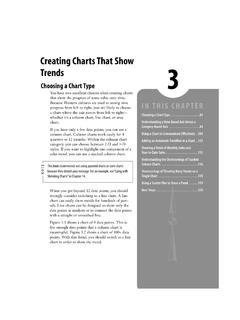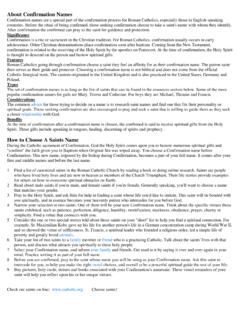Transcription of Goffman’s Dramaturgical Sociology - SAGE Publications Inc
1 271 goffman s Dramaturgical SociologyPersonal Sales and Service in a Commodified WorldPeter Kivisto and Dan PittmanPeter Kivistois the Richard Swanson Professor of Social Thought and Chair of Sociologyat Augustana College, in Rock Island, Illinois, where he has taught continuously sinceobtaining his PhD in Sociology from the New School for Social Research in New YorkCity. It was in the unique environment of the New School that he came to appreciate theimportance of social theory for making sense of the social issues that are important tohim. His major interests revolve around exploring the implications of racial and ethnicgroups living in a society that is both capitalist and democratic.
2 His dissertationresearch, for example, involved a historical excursion into the world created by FinnishAmerican political radicals, which appeared as his first book,Immigrant Socialists inthe United States (1984). He coauthored, with Ronald Glassman and William , Jr.,For Democracy(1993) and published Multiculturalism in a GlobalSociety(2002). He has recently published a second edition of his brief theory text forPine Forge titled Key Ideas in Sociology (2004). With Thomas Faist, he is currentlyworking on an edited book on dual Pittmangrew up in an academic environment in Iowa City. He is a Phi BetaKappa graduate of Augustana College, where he majored in Sociology and completed law school at New York University (NYU), where he served as a staff edi-tor for the Annual Survey of American Law.
3 He is a member of the New York bar andthe Tax Court, and is employed as an Associate by the New York City law firm ofCarter, Ledyard, and Milburn. He recently completed an LLM degree in taxation atCHAPTER 7/3/2007 1:12 PM Page 271 NYU. He has produced a number of Publications on tax law and recently presented a lecture at the Maritime Law Association of the United States. As an avocation, heremains engaged in a project concerned with the cultural roots of the blues, in which heexamines the movement of the blues out of its rural origins in the Mississippi Delta tonorthern original inspiration for Dramaturgical Sociology , the subject of this chapter, derives from the greatest playwright in the English language:William Shakespeare.
4 It was Shakespeare who adorned London s famousGlobe Theater with the Latin motto Totus Mundus Agit Histrionem(All the WorldIs a Theater) and who wrote the following lines for Jacques in As You Like It: All theworld s a stage, and all the men and women merely players. For Erving goffman (1922 1982), arguably the most original American theoristof the second half of the 20th century, the metaphor of life as theater is rich in mean-ing. He sees all human interaction as, in some ways, very much like a grand play. Heis not, however, as concerned with sweeping generalizations about the human condi-tion as he is with the particulars of daily life the micro-level interactions betweenindividuals that, when taken together, constitute the human experience.
5 At this microlevel, he argues, the world is much more like a stage than we commonly goffman , the subject matter of Dramaturgical Sociology is the creation, main-tenance, and destruction of common understandings of reality by people workingindividually and collectively to present a shared and unified image of that brilliant insight that makes goffman s book The Presentation of Self in EverydayLife (1959) so significant is that this process, which he believes lies concealed deepwithin every interaction, is familiar to all of us in the form of the theater. In a play,actors try to convey to an audience a particular impression of the world aroundthem. Through the use of scripted dialogue, gestures, props, costumes, and so on,actors create a new reality for the audience to is goffman s claim that if we understand how a contemporary American actorcan convey an impression of an angst-ridden Danish prince during a presentationofHamlet,we can also understand how an insurance agent tries to act like a professional operating with a combination of expert knowledge and goodwill.
6 If wecan understand how a small stage can be used to represent all of Rome and Egyptin Antony and Cleopatra,we can also understand how the Disney Store creates asense of adventure and wonder in any local mall. Also, if we can understand theprocess by which two paid actors convince us that they are madly in love in Romeoand Juliet,we can understand how flight attendants manage and use their emotionsfor commercial gain. In this chapter, we will attempt to explain aspects ofGoffman s metaphor by taking insurance agents, employees of the Walt Disney cor-poration, flight attendants, and car salespeople as examples of how people createalternate realities. Beyond the metaphor of social life as dramatic ritual, Goffmansensed the potential for alienation brought about because of the problems ofauthentically embracing a role rather than feeling a certain ambivalence or distancefrom it.
7 This alienation is also critical to goffman s CONTEMPORARY 7/3/2007 1:12 PM Page 272 before directly reviewing goffman s Dramaturgical analysis of social interaction,we must briefly consider his rather unique conception of selfhood because it is cru-cial to his method of analysis. goffman does not believe in a self in the traditionalsense; he does not think that we can discuss people s selves abstracted from theirsocial situations. He writes,This self itself does not derive from its possessor, but from the whole scene ofhis action.. this self is a product of a scene that comes off, and not a causeof it. The self, then, as a performed character, is not an organic thing that hasspecific location.
8 [the individual and his body] merely provide the peg onwhich something of collaborative manufacture will be hung for a time. Andthe means for producing and maintaining selves do not reside inside the peg.( goffman , 1959, pp. 252 253)1 goffman is arguing here that the self is not an entity that is in some senseantecedent to its enactment, but rather that it arises in the very process of perfor-mance. What is crucial is a recognition that, for goffman , talking about the individ-ual as some sort of autonomous agent is incorrect; rather, the individual should bethought of always in relationship to a social whole. Thus, the fundamental unit ofsocial analysis, for goffman (1959), is not the individual but rather what he refers toas the team.
9 He writes, a teammate is someone whose Dramaturgical cooperationone is dependent upon in fostering a given definition of the situation (p. 83).Teams, then, are responsible for the creation of perceptions of reality in social set-tings. The crux of his Dramaturgical social theory is that the analysis of how teamscooperate to foster particular impressions of reality reveals a complex system ofinteractions that, in many ways, is like the presentation of a assumes that his theory could be applied to all social activities, but it isespecially visible in certain commercial settings. This will be illustrated in the fourexamples we have chosen to employ.
10 The first is Arlie Hochschild s The Managed Heart(1983), in which she looks at the world of airline flight attendants. She describes thetypes of social interaction found among flight attendants, contending that the entireflight crew must form a coherent, unified team intent on conveying to passengers asense of competence and friendliness. If any attendant started behaving rudely or,worse, incompetently, the entire project would fail. Similarly, employees in the DisneyStore, the focus of Kelly Kraft s ethnographic study, must all foster a sense of adventureand wonder for customers; if one employee looks sullen and bored, the atmospherewill be lost, and the team s attempt to convey a particular understanding of reality willbe deemed a failure.

















